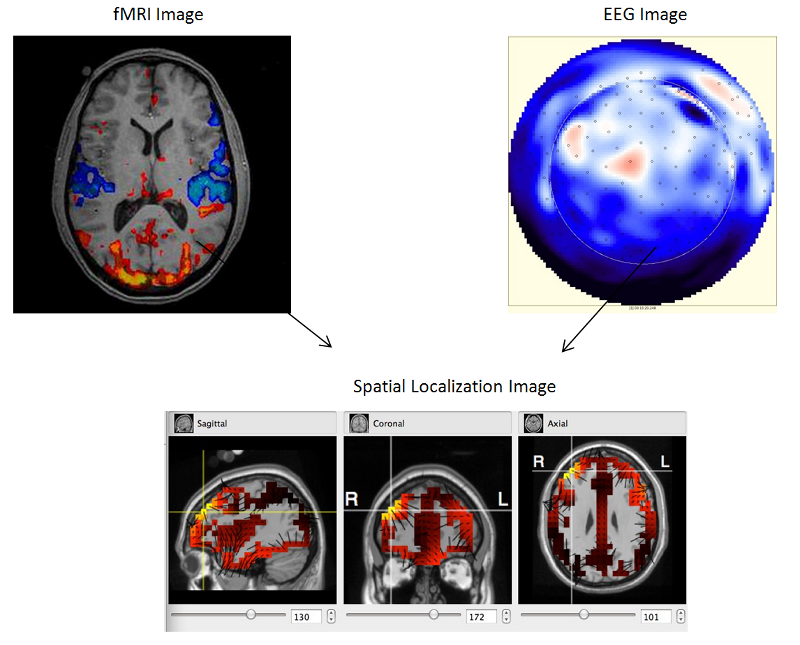EEG: Source Localization
EEG: Source Localization
EEG: Localization of Spatial Disorientation (Source Localization)
A major debate in the field of medical research is which data acquisition tool is more effective: Electroencephalography (EEG) or functional Magnetic Resonance Imaging (fMRI). While fMRI's provide high resolution images of the brain and their active regions, they also are expensive to run and have a very low sampling rate. EEG's on the other hand are almost the exact opposite. Their sampling rate is far greater than the fMRI's; however, the picture has low resolution and is void of any spatial localization. Because each method has their own pros and cons, the area of Spatial Localization was proposed as a means to develop a method encompasses the high sampling rate of EEG and the quality of the fMRI. Using EEG technology and various filters to remove unwanted information from the signal, we are able to get a clear picture of brain activity. Then using the software, a 3D spatial representation is acquired for data analysis and study. Further research is being conducted to enhance and optimize source localization algorithms.

